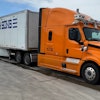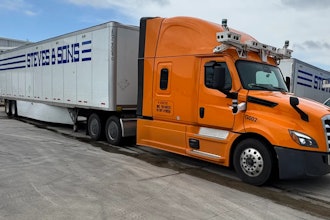
Let’s be honest: If you’re thinking about motor control, you’re probably focused on the output of your controlling device. You’re concerned with velocity, torque and position.
Unless, of course, issues with the input have resulted in serious equipment damage, additional costs or lost productivity. Then, your focus can turn to harmonic distortion. The harmonic distortion of incoming power is essentially electrical pollution. This distortion is caused by loads that draw currents which are not necessarily sinusoidal. It can then impact everything that shares the power source, including:
- Motors that take power directly from the line will run at higher temperatures.
- Associated conductors will be affected, leading to increased repair and replacement costs.
- Circuit breakers can trip erratically.
- Communications may be interrupted, affecting the operations of sensitive control equipment. The distortion can cause erratic logic faults in equipment like CNCs, PLCs, UPSs and computers. It can even make clocks run faster.
And, of course, all of these issues can lead to unplanned downtime and reduced productivity.
Addressing Harmonic Distortion
How concerned should you be with harmonic distortion? It’s relevant for facilities across a number of industries, but there are two key factors to consider.
First, look at the size and impedance of the power source relative to the drive. A small drive on a large power source does not present a problem. On the other hand, when the source is smaller relative to the drive or the drive system is relatively large, the distortion creates a more severe problem.
Second, think about your neighbors and environment. Who shares the electrical grid with your facility? It is common for municipal facilities, like water and water treatment facilities, to share the grid with residential or commercial areas. Harmonic issues are more severe for these types of facilities than factories in industrial parks. They can increase energy costs and cause issues for your neighbors.
A number of drive solutions are available for reducing harmonic distortion. Based on my experience as an engineer, I have two key criteria for selecting the best drive:
- Look for a low-harmonic drive. It’s already equipped to eliminate or reduce the harmonic distortion it creates. Low-harmonic drives are compact, packaged with the necessary components to mitigate harmonics and ready to connect, with no additional work needed. A classical filter solution, on the other hand, is an external device that often requires separate shipments, installation, wiring and maintenance.
- Choose a drive that meets global standards. For harmonic distortion, the most commonly accepted standard is the IEEE-519.
This is a high-level look at harmonic distortion and its impacts – the start to what may require a more in-depth conversation for some organizations. To learn more about drive solutions available to address harmonic distortion, visit this webpage.
Johannes Hempel is a senior commercial engineer at Rockwell Automation.























